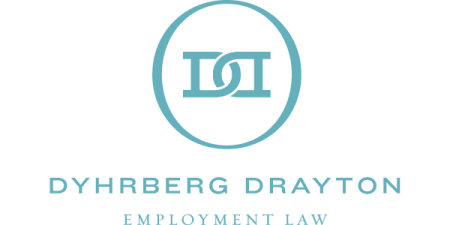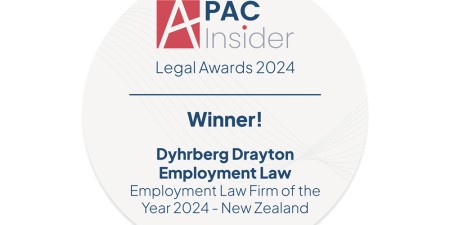Protection of Employees in Public Roles
It’s not uncommon to see people bring out their phones to film or photograph situations they want to share with a wider audience, often through social media. For employees who are public facing or performing roles which require them to be out in the community, this can directly impact their work and sense of privacy.
A recent example of this is the photographing of Wellington Water employees. On 14 February 2024 Wellington Water posted on Facebook:
“Kia ora Wellington,
While our crews might be decked out in eye-catching hi-vis, that doesn’t mean they’re ready for their close up.
Some of our crews have noticed people taking photos and videos of them while they’re on the job, even after they’ve asked them not to.
It might not seem like a big deal, but just think: if someone came into your workplace and started taking photos, how would you feel?
It’s important that our crews are able to focus on the job at hand.
So remember, taking a snap of the job they’ve done is totally fine – but please, keep our crews out of it.”
As reports mount of increasing harassment to local government workers online, and in public, Wellington Water has taken a sensible step to protect their employees. It raises the question about what level of privacy public-facing employees can expect and what obligations employers have to ensure the privacy of their employees.
Privacy in public-facing roles
There is no general right to privacy from your photo being taken in public. The milestone Court of Appeal case of Hosking v Runting[1] created a new tort for invasion of privacy. However, when dealing with the substantive issue of the case—photographs taken of people in public places—the Court determined the protection of the tort would not extend to those circumstances. This aligned New Zealand with a large body of international precedent which states there is no privacy protection for people in public places where an innocuous photograph has been taken of them.[2] Exceptions to this include where there is a reasonable expectation of privacy and publication given to the private fact (or photo).
Strictly speaking, employees who have had photos and videos taken of them while working in public do not have privacy protections available to them. Whilst this behaviour is not illegal, the response to the behaviour described in Wellington Water’s post would suggest it is morally wrong and socially unacceptable. The right to privacy is a well-formed value of New Zealanders, one the legislature saw fit to protect with the Privacy Act 1993 and the establishment of the Office Privacy Commissioner. Despite not being legally protected from this specific behaviour in and of itself, employees should feel protected from the attitudes and circumstances that can surround it.
Obligations of employers
Whilst photo taking may not be deemed intrusive, it is often accompanied by aggressive behaviour, or posts online (which can be abusive). Council workers such as parking enforcement officers, animal control officers, gardeners, and others are at the coalface of administering local government policies. Whilst ‘just doing their job’ these workers can represent to disgruntled taxpayers something much bigger. The aggression towards council workers often represents grievances caused by policy direction, something an employee will likely have no say in. Council workers have been facing ever-increasing abuse and harassment over the past few years. Christchurch City Council says the number of reports of threats by the public to council workers in a year increased from 2019 to 2022 by 488.[3]
The issue of employees being photographed and videoed is therefore a symptom of a bigger problem. Whilst the symptom cannot be addressed alone, the law has ways to address the bigger picture and underlying cause of this issue. The case of Makeham v New Plymouth District Council[4] found that an obligation for council workers to wear a name tag with both their first and last name was an unreasonable requirement for employees with public-facing roles. Judge Shaw of the Employment Court had concerns about the availability of private information to members of the public who were threatening workers and how it could further endanger the employee personally. A photo of a worker is not a private fact in the same way a person’s full name is, but this judgment suggests if the publication of a photo presents a real risk to the employee personally, an employer should manage this risk. In the age of Vic Deals and online vigilante justice, it is not hard to imagine a situation where this risk would arise.
The Health and Safety at Work Act 2015 requires a Person Conducting a Business or Undertaking (which can include organisations and individuals) to ensure, so far as is reasonably practicable, the health and safety of their workers. For employees who find themselves being the subject of public photos and videos this is good news as they are afforded some protections. Their employer must ensure the aggressive behaviour which can accompany these incidents is not putting them at risk. Additionally, if the photo itself can cause harm to the employee, the employer has obligations to address the risk of that happening.
Employer advice: how to address that risk
If employees within an organisation are experiencing and reporting harassment or threatening behaviour and abuse from the public, employers will need to ensure they are engaging with their concerns. Employers should ask the employee about the experiences they have had or heard about and discuss with them ways to eliminate risks and make the employee feel comfortable at work.
Best practice for employers with public-facing employees includes training for handling difficult situations, de-escalation techniques and communicating the purpose of the employees’ task to customers and the public. Training regarding how to manage situations where photographs are being taken could be something employers should consider.
Being proactive is the best way to ensure customers and the public know they are expected to treat staff with respect. Where examples of poor treatment of employees begin to occur, or simply the risk of such behaviour arises, employers must ensure they are taking positive steps to inhibit the potentially harmful and dangerous behaviour. In the case of retail businesses where employees are suffering from harassment, signs throughout the building encouraging positive interactions with staff could be a reasonably practicable step for an employer to take. Where the employees are going into the community, there are several ways forward:
- A Facebook post like Wellington Water’s, as well as any other social media or website available to the employer.
- Including a disclaimer about the treatment of staff in any letters notifying public works.
- Maintaining a consistent message about treating employees with respect and kindness across all communication channels.
As well as being proactive in implementing processes to protect employees, it is important to continue to be open and receptive to feedback. When concerns are raised by employees, addressing them early, rather than allowing them to manifest into a greater problem, affords protections to both employees and employers.
Assistance
If you want advice on your obligations regarding the health and safety of your public-facing employees, or you are concerned about the protection your employer is offering you, do not hesitate to contact the Dyhrberg Drayton Employment Law team for assistance.
Lachlan Spence, Law Clerk and Imke Kitchin, Lawyer.
[1] Hosking v Runting [2004] NZCA 34.
[2] Katrine Evans “Hosking v Runting balancing rights in a privacy tort” (2004) 28 PLPR 34.
[3] Adam Burns “Christchurch City Council staff tired of ‘unacceptable behaviour’ from abusive public” (5 May 2023) Radio New Zealand <www.rnz.co.nz>.
[4] Makeham v New Plymouth District Council [2005] NZEmpC 8.



